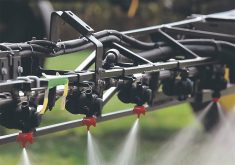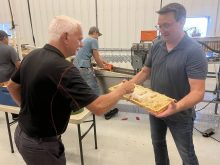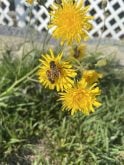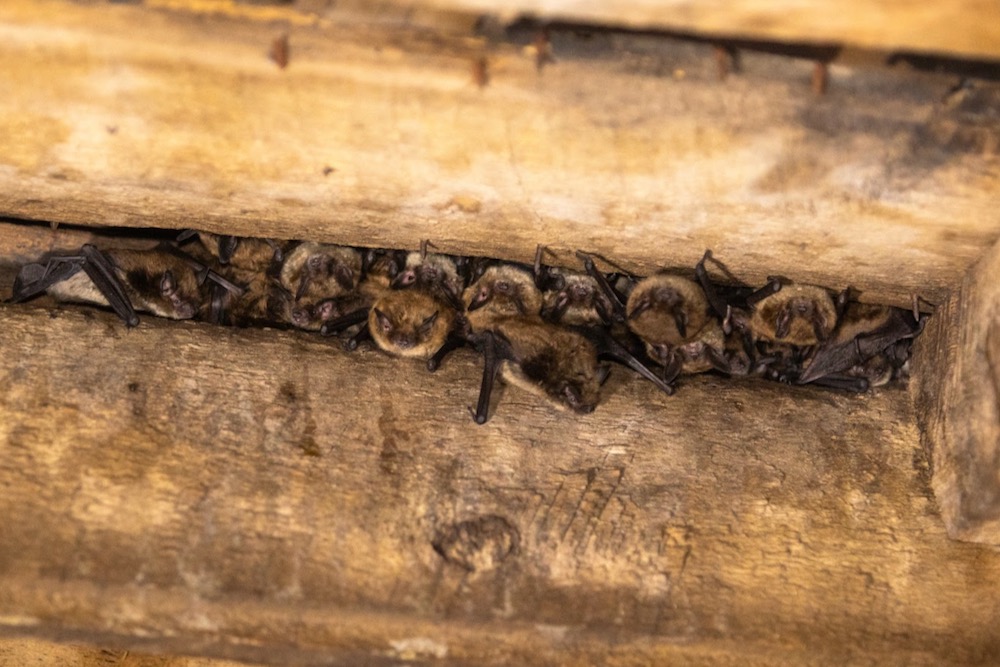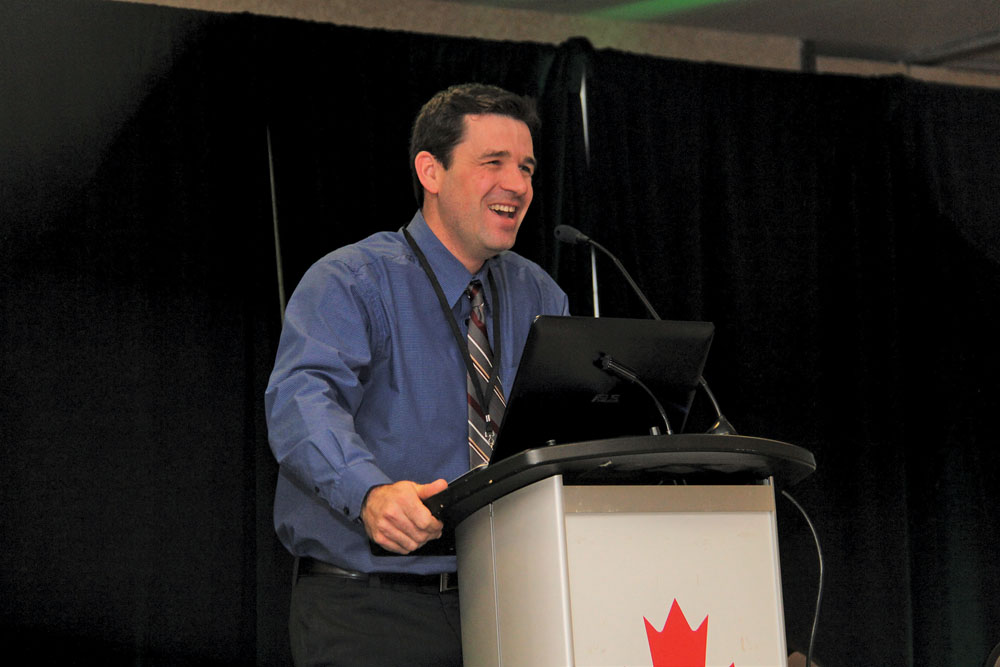Bats are associated with scary things like vampires and rabies, but it’s time to give the critters a break.
“For some reason, bats have a negative image around them,” said Lisa Card, a conservation technician with Highway 2 Conservation, which serves Sturgeon, Athabasca, Barrhead, and Westlock counties.
“It might be because they are nocturnal and we don’t know too much about them. Rabies may have been a problem in the past, but they’re really a beneficial species and there’s nothing to be scared of.
Read Also

VIDEO: Claas Axion 9 tractors showcase comfort features
German equipment manufacturer Claas showcased its new Axion 9 tractor series, including farmer-focused cab features, at the Agritechnica 2025 machinery show in November.
“Their lives are worth something, so we have to find a way to coexist with them and dispel the fear and negativity around them.”
That was the message Card delivered at recent bat information workshops in Barrhead and Westlock.
Bats are the sole pollinators of about 300 species of tropical plants, and a 2011 American study estimated they save the U.S. agricultural industry $3.7 billion every year in pest control. In Alberta, bats are often hunting while wheat midge are active and one provincial species, the little brown bat, can consume as many as 6,000 mosquitoes in one night when feeding its pups.
“If you have a colony of 50 bats, think of how many mosquitoes are taken care of in a night,” said Card.
While some believe bats spread rabies, the critters are actually controlling dangerous pests.
“The last case of rabies in Alberta was in 2006,” said Card. “Since 2002, we’ve had 680 cases of West Nile virus. Bats are doing a much better job of disease control than they are spreading disease.”
Dogs are a more likely carrier of rabies, and rabid bats don’t attack people. In most cases, people who have been bitten by rabid bats were handling sick animals without wearing gloves.
“If you see a sick bat, a bat that is acting abnormally or flying around during the day, just leave it alone and don’t touch it,” she said.
Bat houses
There are nine bat species found in Alberta. The most common are the big brown bat and the little brown bat. But their populations are declining due to wind turbines, habitat loss, and a disease called white nose syndrome.
But agricultural producers can pay an important role in creating habitat for bats. A few years ago, Card studied bat activity in different landscapes in Alberta, and found bat activity was the same in naturally forested and agricultural areas.
“I was quite surprised because I thought that the natural areas would have the largest amount of feeding and calls,” she said, although larger species were found more frequently in naturally forested areas.
- More on the Alberta Farmer: What to do when the bats come home to roost
Dugouts and other open watering sources can be attractive areas to bats, since they need places to drink and feed on the mosquitoes and other insects in the area. Bats are also attracted to plants such as rosemary, thyme and evening primrose.
To create a habitat that is inviting for bats, leave dead snags in trees, because bats like to roost in the holes in them.
“If it’s not a safety hazard, just leave it up and think of it as mosquito control,” said Card.
Producers can also build bat houses and can find designs on the Internet. Houses should be placed about 15 feet off the ground, south facing, and have a clearance of about 20 feet around them so bats can swoop in and out. Bat houses need to be in a spot that is warm, easy to find and not easily disturbed. Placing houses in trees isn’t the best option because the bats can be threatened by other species like blue jays or squirrels.
“The most successful placement is generally on a pole in the middle of the yard,” said Card.




